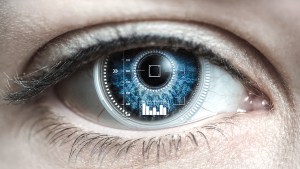Lenten Campaign 2025
This content is free of charge, as are all our articles.
Support us with a donation that is tax-deductible and enable us to continue to reach millions of readers.
After its disappointing debut of Believer, CNN has launched another docuseries that picks up the spiritual slack in an unlikely setting: the frontiers of technology.
The goal of Laurie Segall’s Mostly Human seems to be, in part, to raise the profile of the network’s digital app, where you can watch the free show in its entirety. It was an ironic choice though, because the six-part series is mostly about the disturbing and even dangerous side of the digital age. Segall investigates smartphone addiction and those who very intentionally try to hook new users; the “secret” of Silicon Valley, where mental illness has become a widespread problem, even (and especially) for tech leaders; the Ashley Madison data breach, which resulted in a public list of names of millions of people cheating on their spouses; a British-born computer hacker who became an ISIS supporter and was eventually killed by a drone strike in Syria; various individuals and businesses trying to use robots and virtual avatars for sex, love, and even marriage; and the ways in which people are using digital technology to try to deal with – or avoid – death.
The result is a sharp, well-crafted blend of tech trends, human interest stories, and sci-fi horror, with a little more of the last ingredient than its affable host probably intended. Segall seeks out bright spots in the digital landscape – for example, a mother dying from cancer who works on a “digital legacy” to upload for her children – but they don’t last. The six episodes are rife with stories of addiction, depression, mania, suicide, fraud, terrorism, abuse, loneliness, and grief.
In one of the more graphic episodes, Segall talks with a woman outside of Paris who has built a robot companion she names “InMoovator.” She kisses and cuddles her robot, sleeps with it in bed, and even decides she wants to marry it. “As I always say: love is love,” Lilly explains. “It’s not that different.” When asked what is different about InMoovator, she concludes: “Human beings are irrational, whereas the robot is logical and rational. When something is going wrong, we know it is a problem with the script or code.” From there, we visit a “love doll” inventor whose rows of robotic companions look like a chilling prequel to Westworld.

Read more:
Educating monsters: ‘The Girl with All the Gifts’ and ‘Life’ both snuff the God-spark
In a word, “Mostly Human” is mostly dark, and without even going after big game like cyberbulling, cyberattacks, or transhumanism.
But Segall does talk to one noted transhumanist: Ray Kurzweil, an inventor and futurist who predicts the merging of man and machine by 2045. Kurzweil’s take is this: that technology has always been a neutral extension of ourselves. “Technology has been a double-edged sword ever since fire,” he says. “Kept us warm, but also burned down our houses. Technology is power, and it can be used destructively.”
He may be right. But if Mostly Human is evidence of anything, it’s that even if technology is neutral, its users are not. We clearly are irrational, not because we think too little, but because we can’t think straight. We pile sentimentality on top of cleverness, but just below the surface is a will for power and pleasure that sentimentality doesn’t explain and cleverness can’t control. The more powerful our technology gets, the more that disorder is amplified, and the more it’s amplified, the less connected our world actually becomes. “In a sense,” Segall reflects, “technology has the innate ability to capture humanity sometimes lost behind a screen.”

Read more:
Transhumanism: 5 characteristics of the contemporary race against death
This is all too familiar to a local pastor, who reflects on the Ashely Madison hack and how it destroyed a local family. “The list is a list about human temptation and failure,” the pastor reflects, “and maybe to some extent fantasies. And all of us suffer that. We all are tempted. And it may be in various ways. We’re not all tempted in the same way. We stumble, we fall, we hurt ourselves, we hurt the people that we love. And that’s just a common story. There were 32 million names in that hack. And that’s just the tip of the iceberg. Everybody’s name on the planet is in some way on that list. And that’s the confession we need to make and realize. All of us are broken.”
It’s a word that pops up again and again in Mostly Human and an interesting turn for a series about gadgets that work so well.
How do we get un-broken? Is there really no script or code that can fix us?
Not surprisingly, we meet with several people trying to turn the methods and mentality of the digital age back on itself, treating ancient riddles of love, loss, death, and God through the can-do lens of a start-up.
But Segall also meets with a group of tech leaders who decide that maybe the best thing to do is just unplug from the digital world – not all the time, but often enough and long enough to rediscover the beauty of everyday things like conversation, prayer, and stillness.
Maybe that really is the only way to get the right answer – or even to think to ask the right question.

